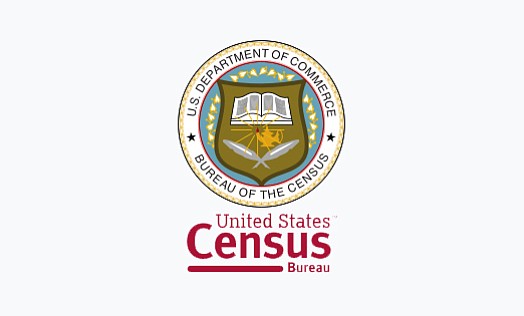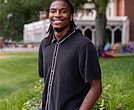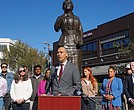U.S. Census Bureau: City population continues to grow
Jeremy M. Lazarus | 3/30/2018, 11:28 a.m.
Richmond’s population has jumped above 227,000 people for the first time in at least 40 years, and current trends suggest the capital city’s population should easily exceed 230,000 residents when the mandatory 10-year census is taken in 2020, according to the U.S. Census Bureau.
The city’s population growth was noted in new estimates the Census Bureau released last week for cities, counties and towns across the country. The report estimates populations as of July 1, 2017.
The good news report showing that Richmond continues to add people helps explain the ongoing growth in apartment development and the strengthened market for single-family homes, even in areas of the city that were considered less desirable just a few years ago.
The new Census Bureau report estimated that Richmond had 227,032 residents as of July 1, 2017, up nearly 23,000 people or 11.17 percent from the 2010 Census, which reported 204,214 residents.
That ranks Richmond, along with Charlottesville and James City County, among the fastest growing communities outside of Northern Virginia, which continues to add people faster than any other section of the state.
According to the Richmond Planning Commission, the city, which is landlocked at 62.5 square miles, still has plenty of room to accommodate population growth.
In 1950, Richmond reported about 5,800 persons per square mile, but currently has about 3,800 persons per square mile, a lot lower density, the commission noted.
The Census Bureau’s breakdown of the newly estimated population by race, sex and age has not yet been released, but the 2016 estimate indicated that the strongest growth in population was among the elderly and white and Latino populations.
As of 2016, Richmond was no longer a majority African-American city, though African-Americans remained the largest single population group with about 49 percent of the population.
Richmond’s population peaked at around 250,000 people in 1970, largely due to an annexation, and then began falling as “white flight” accelerated as the last barriers to school integration were dismantled and African-Americans also gained political control of City Hall.
The city’s population finally stabilized in 2000 at around 198,000 people and has been growing ever since, first slowly and then at a faster pace.
In its latest report, the Census Bureau also revised the 2016 estimate for Richmond upward, from 223,170 people to 225,288 people. That’s a jump of about 5,000 residents from 2015, when 220,280 people were estimated to live in the city.
The Census Bureau’s estimates are well above those of state demographers at the University of Virginia’s Weldon Cooper Center, whose annual estimates are used by the General Assembly to distribute funds to local governments for roads, public education and other services.
According to the Cooper Center estimate for July 1, 2017, Richmond had a population of 222,883, up about 18,000 people or 9 percent from the 2010 Census. The center uses a different, more conservative approach to estimating population and its estimates often trail those of the Census Bureau.
Richmond is one of the faster growing segments of a metropolitan statistical area that stretches from Sussex County to Caroline County and includes the cities of Petersburg, Hopewell and Colonial Heights.
According to the Census Bureau, the Richmond Metropolitan Area had about 1,294,000 people as of July 1, 2017, up about 86,000 people from 2010, with most of the population increase occurring in Richmond and Henrico and Chesterfield counties.
Both counties also continue to add people. As of July 1, 2017, Chesterfield County was estimated to have 343,599 residents, up 27,000 people or 8.65 percent from 2010, while Henrico County had 327,898 residents, up about 21,000 people or 6.83 percent from 2010.
Statewide, 8.47 million people were estimated to live in Virginia as of July 2017, a 6 percent increase from 2010, but only a 1 percent increase from 2016. Virginia still ranks as the 12th most populous state.
State demography experts indicate that growth has begun to slow overall in Virginia, and new forecasts suggest the population of people 65 and older is expanding faster than the number of children.
The fastest growing Virginia locality: Falls Church, whose population grew by 5.2 percent in the 12-month period between 2016 and 2017, the most for any county or city in the country. By contrast, estimated population growth in Richmond during the same period was less than 1 percent.
The population of two other Northern Virginia localities, Loudoun County and Manassas Park, grew more than 3 percent in that one-year period. The only locality in the Richmond area where population grew by more than 3 percent was New Kent County.
According to the Weldon Cooper Center, outside of Northern Virginia and a few other cities, Virginia’s growth rate has slowed to the lowest level since before the Great Depression.
Population in farm and coal-mining sections of the state continues to decline.
Overall, by 2040, state demographers project up to half the state’s population will live between Fredericksburg and Washington.






